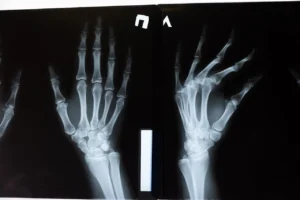
Regeneron Pharmaceuticals, Inc. (NASDAQ: REGN) and Sanofi today announced that the U.S. Food and Drug Administration (FDA) has updated the label for Dupixent® (dupilumab) in atopic dermatitis, adding efficacy and safety data for patients aged 12 years and older with atopic dermatitis with uncontrolled moderate-to-severe hand and/or foot involvement. These Phase 3 data are from the first and only trial evaluating a biologic specifically for this difficult-to-treat population and have also been added to the Dupixent label in the European Union, with regulatory submissions underway in additional countries.
“We rely heavily on our hands and feet throughout the day, making atopic dermatitis particularly disruptive for patients who experience constant itch and painful cracking and bleeding skin lesions on these critical areas of the body,” said George D. Yancopoulos, M.D., Ph.D., Board co-Chair, President and Chief Scientific Officer at Regeneron, and a principal inventor of Dupixent. “Dupixent has been used to treat hundreds of thousands of patients with moderate-to-severe atopic dermatitis around the world since its initial U.S. approval in 2017, and we are pleased that Dupixent is now the first biologic with data in the label supporting its use in this particularly challenging subset of the disease.”
“Living with atopic dermatitis on your most essential body areas like the hands and feet can make daily activities including walking and writing incredibly burdensome even in the case where disease symptoms are mild elsewhere. Unfortunately, treating atopic dermatitis on the hands and feet has historically been difficult and there have been no Phase 3 trials evaluating a biologic in this population of patients,” said Naimish Patel, M.D., Head of Global Development, Immunology and Inflammation at Sanofi. “Having these data added for this difficult-to-treat population is important for physicians looking for tools to treat these patients and reinforces the already well-established efficacy and safety of Dupixent in atopic dermatitis overall.”
The label update is based on data from the Phase 3 LIBERTY-AD-HAFT trial. In the trial, patients received Dupixent (n=67) every two weeks (adults 300 mg, adolescents 200 mg or 300 mg based on body weight) or placebo (n=66). At 16 weeks, patients treated with Dupixent experienced the following:
- 40% achieved clear or almost clear skin on hands and feet compared to 17% with placebo, the primary endpoint
- 52% saw a clinically meaningful reduction in itch on hands and feet compared to 14% with placebo, the key secondary endpoint
The safety results were generally consistent with the known safety profile of Dupixent in atopic dermatitis. Most common adverse events (AEs) observed with Dupixent (≥1%) in atopic dermatitis include injection site reactions, conjunctivitis, blepharitis, oral herpes, keratitis, eye pruritus, other herpes simplex virus infection, dry eye and eosinophilia.
About the Clinical Trial
The Phase 3 double-blind, placebo-controlled trial, LIBERTY-AD-HAFT, evaluated the efficacy and safety of Dupixent in 133 adult and adolescent (aged 12 to 17 years) patients with atopic dermatitis with moderate-to-severe hand and/or foot involvement who had an inadequate response or intolerance to topical corticosteroids. Patients with hand and foot disease predominantly driven by allergic or irritant contact dermatitis were excluded from the trial.
The primary endpoint evaluated the proportion of patients with clear or almost clear skin of hand and feet eczema at 16 weeks, as measured by a score of 0 or 1 on the Investigator Global Assessment Scale. The key secondary endpoint measured the proportion of patients with improvement in itch on hands and feet from baseline (measured by a ≥4-point reduction in Peak-Pruritis Numeric Rating Scale [PP-NRS] on a 0-10 scale) at 16 weeks.




